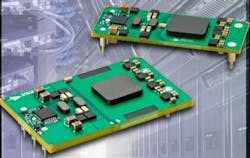Navy chooses Sechan to manufacture data computers for CEC radar sensor-fusion air-defense system
CEC distributes sensor and weapons data from existing systems by fusing tracking data from participating sensors and distributing it to all other participants using identical algorithms to create one common radar air defense tactical picture based on all sensor data available.
CEC is designed to provide early detection and consistent tracking of air threats such as cruise missiles, manned aircraft, and unmanned aerial vehicles, and is based on a high-bandwidth military communications system with electronic countermeasures that blends in the global positioning system (GPS). The SDP-S assemblies are used on CEC shipboard, airborne, and land mobile platforms to provide a composite network picture.
In addition to the $64.2 million contract Sechan is receiving to manufacture (SDP-S) production units, the company also is receiving a $13.8 million Navy contract for 84 SDP-S assemblies.
The current contract includes purchases for the U.S. Navy and partner countries, the first of which is Australia. Sechan will do the work in Lititz, Pa., and should be finished by October 2016.
For more information contact Sechan Electronics online at www.sechan.com, Raytheon Network Centric Systems online at www.raytheon.com/businesses/ncs, Harris RF Communications at http://rf.harris.com, or Naval Sea Systems Command at www.navsea.navy.mil.
